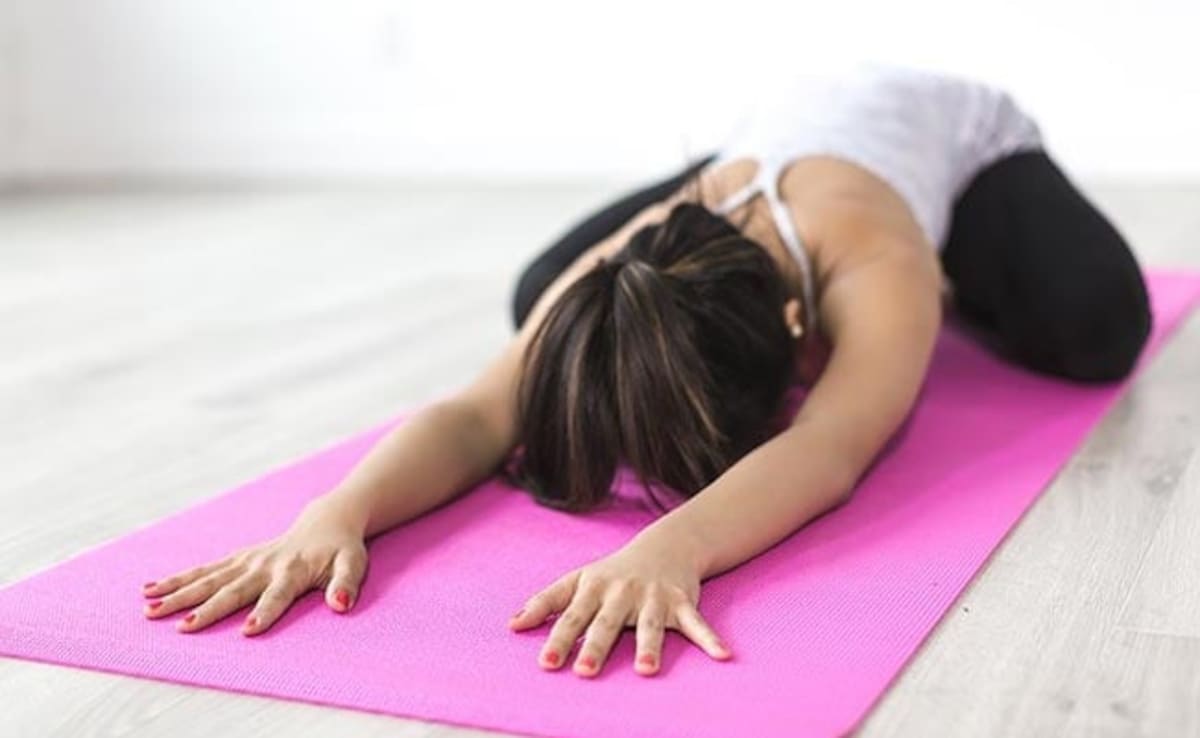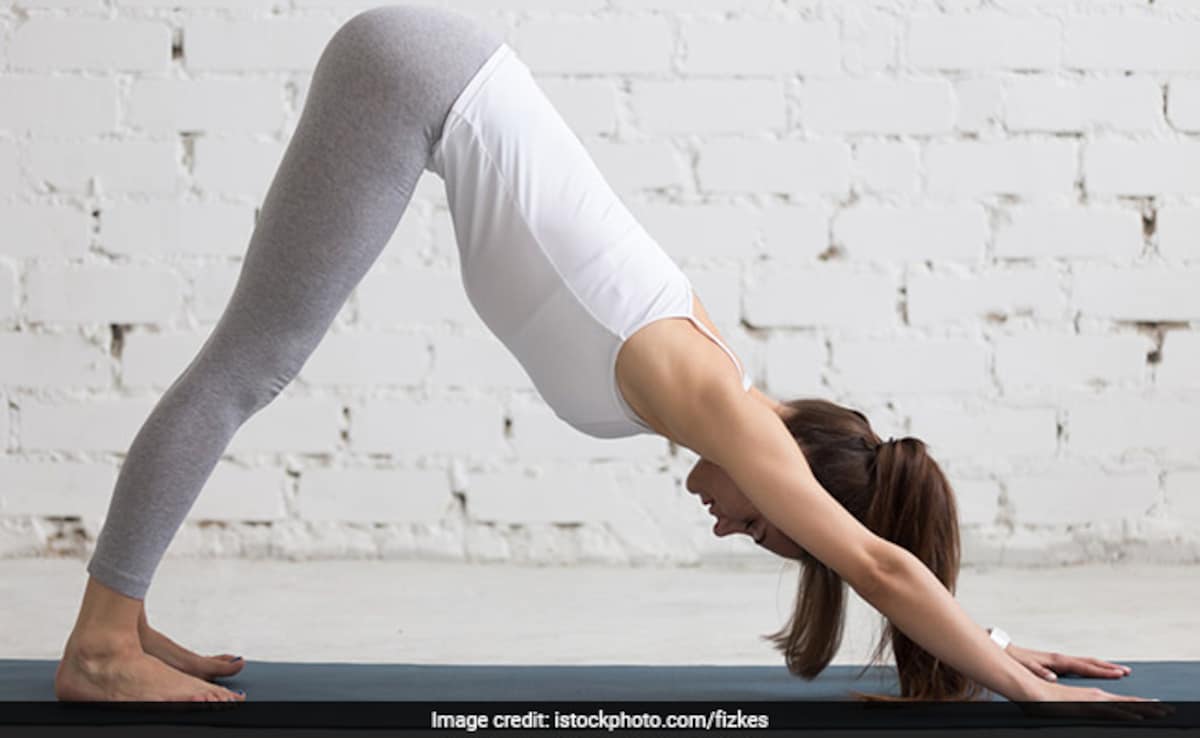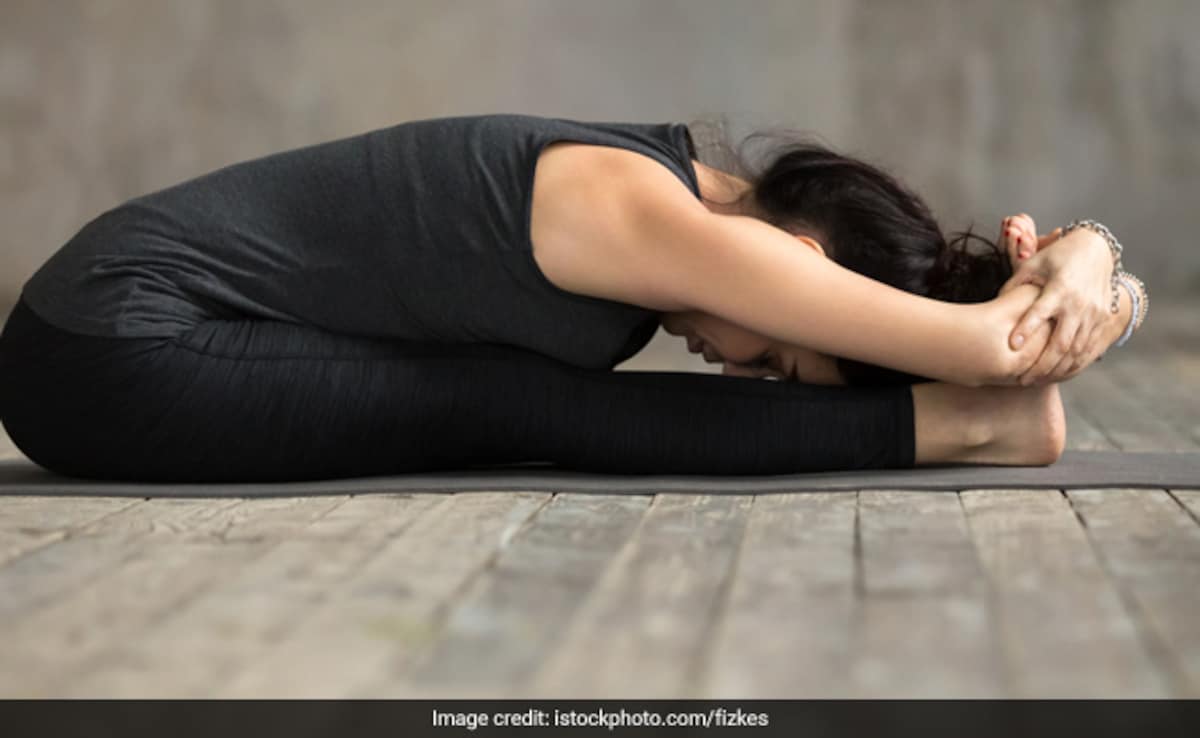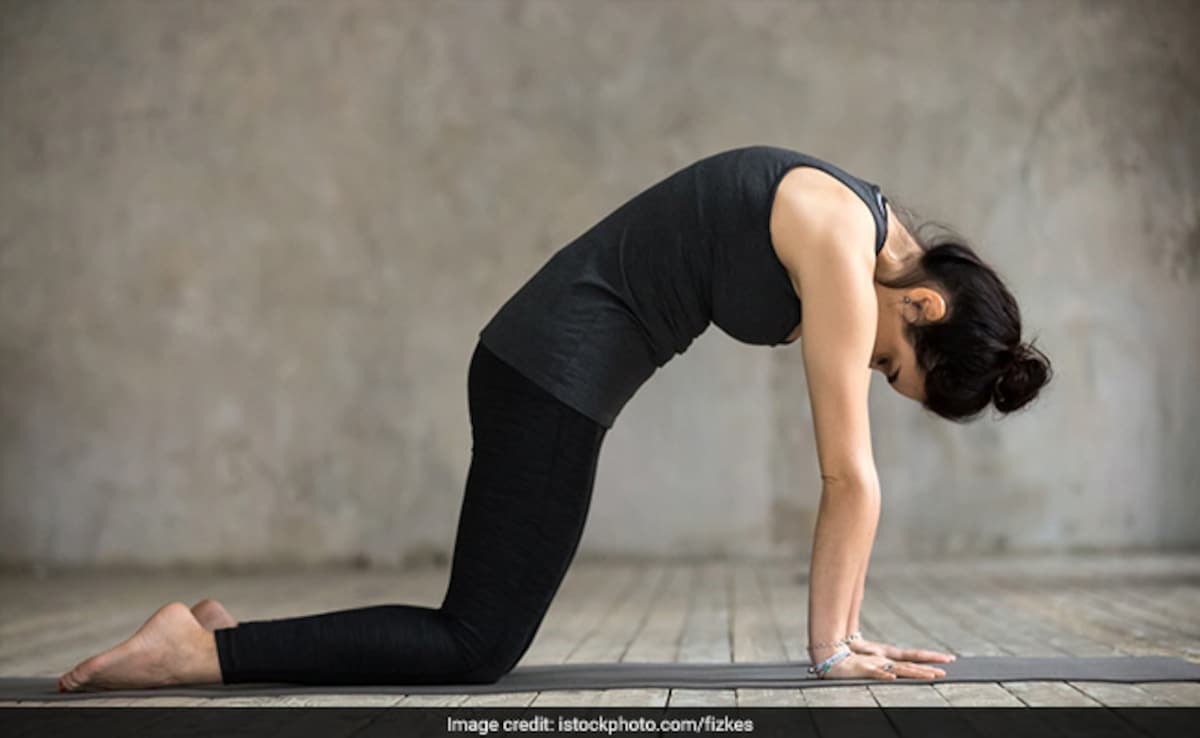
Yoga is highly beneficial for alleviating body aches, particularly back pain caused by prolonged sitting at work. Regular yoga practice helps strengthen and stretch muscles, improve flexibility, and enhance posture, all of which contribute to reducing back pain. By focusing on core strength and spinal alignment, yoga can relieve tension in the back, reduce stiffness, and improve circulation. It also promotes relaxation and reduces stress, which can further alleviate pain. Specific yoga asanas target the muscles of the back, hips, and shoulders, helping to counteract the negative effects of sitting for extended periods. Read on as we share a list of yoga asanas and how to perform them to reduce back pain.
Yoga asanas that can help reduce back pain from long work hours
1. Balasana
- Sit straight with your legs folded
- At this point, your feet are supposed to be facing upwards
- Now, slowly bend your torso forward on the floor
- At this point, your arms should be extending forward as well, as far as possible
- Your face should also be facing the floor as well as your palms
- Your calves, forehead, and palms should all be touching the ground in this position
- As it only stretches your body and is a resting pose, it provides comfort and relaxation
- Hold this position for 10-15 seconds and perform 4-5 sets daily.

Photo Credit: iStock
2. Bhujangasana
- Lie on the floor, face facing the ground
- Now, place your palms on your sides and slowly lift your torso
- At this point, the only body parts touching the ground should be your palms and lower body
- Hold this position for 30 seconds and release
- Repeat 3-4 times daily

Photo Credit: iStock
3. Adho mukha svanasana
- Lay flat on the ground facing the floor
- Slowly lift your torso and form a mountain-like structure with your body
- Your palms need to be farther apart and reaching outwards (in comparison to your shoulders)
- On the other hand, your feet need to be placed next to each other
- At this point, the only body parts touching the ground should be your palms and feet
- Your face needs to be facing inwards and downwards, at the same angle as the arms
- Your body must form a triangle (your hands, hips, and feet being the corners)
- Hold this position for a few seconds and repeat 10 times at least

Photo Credit: iStock
4. Paschimottanasana
- Sit straight in your legs straight in front of you
- In this position, your feet's soles should be facing front
- Slowly bring your torso closer to your legs and as far as possible
- You can use your hands to hold your feet, this may increase how far you can reach
- In this position, your stomach and chest are supposed to be touching your thighs
- Your face can be facing the front or towards the legs, whichever may be comfortable
- Hold this position for 10-20 seconds and sit back up
- You can repeat it a few times based on your convenience

Photo Credit: iStock
5. Marjaryasana-bitilasana
- Get on your knees and hands (How you would imitate a four-legged animal)
- Lift your back upwards, forming a mountain-like structure
- While you do that, make sure you push your face inwards, looking at your own torso
- Now, push your back inwards, forming a 'U' position with your back
- While you do that, look toward the ceiling
- Repeat mountain motion with face inwards and then ‘U' structure with face upwards for a minute.

Photo Credit: iStock
Follow these asanas to reduce back pain and improve overall health.
Disclaimer: This content including advice provides generic information only. It is in no way a substitute for a qualified medical opinion. Always consult a specialist or your doctor for more information. NDTV does not claim responsibility for this information.
Track Latest News Live on NDTV.com and get news updates from India and around the world

